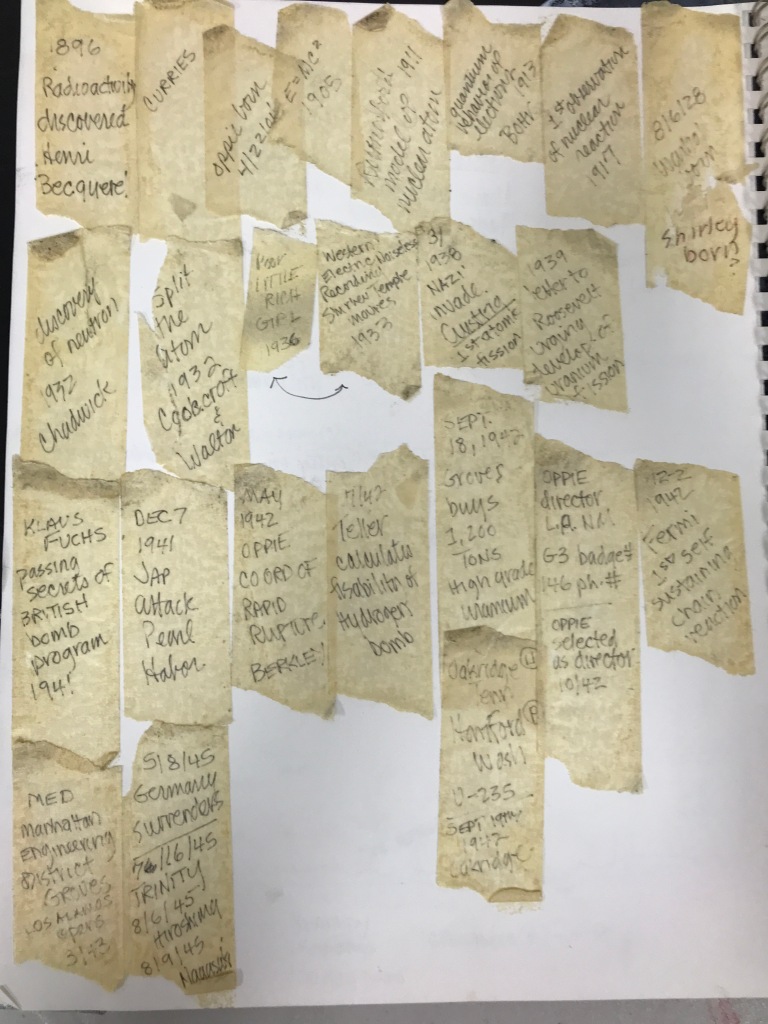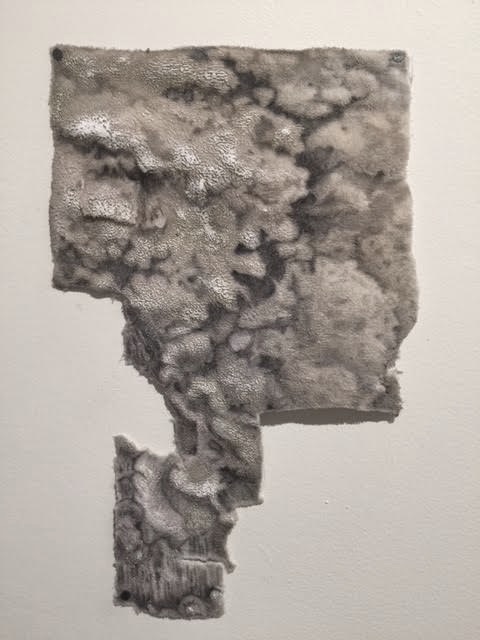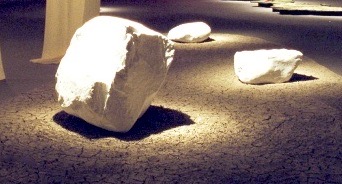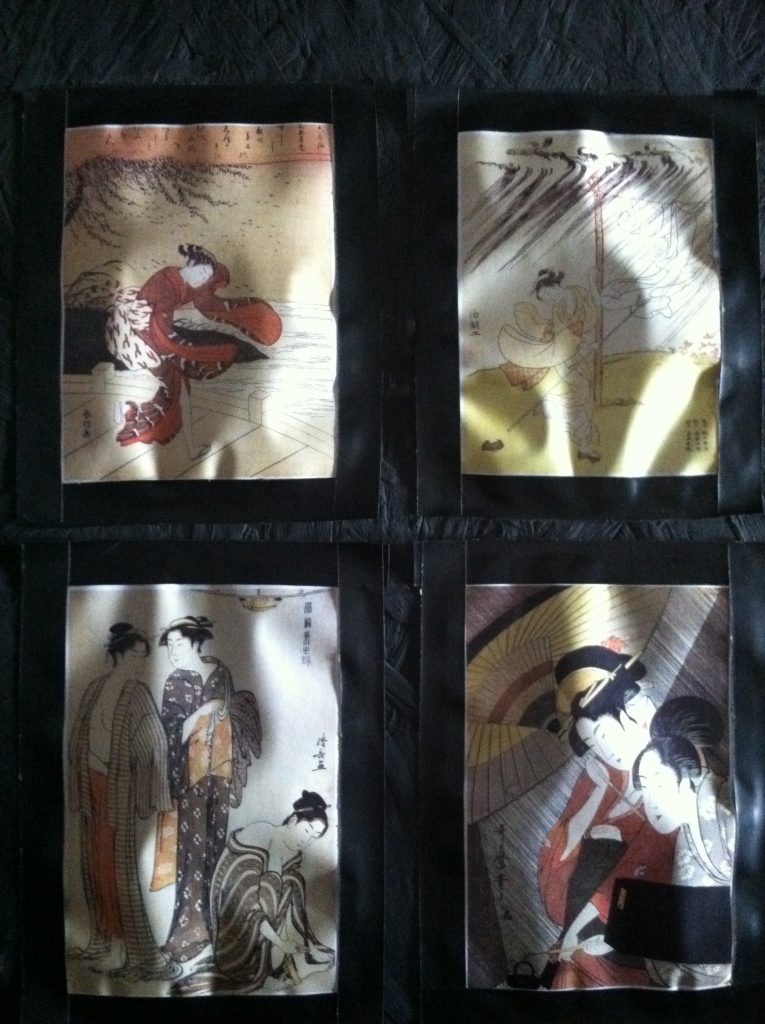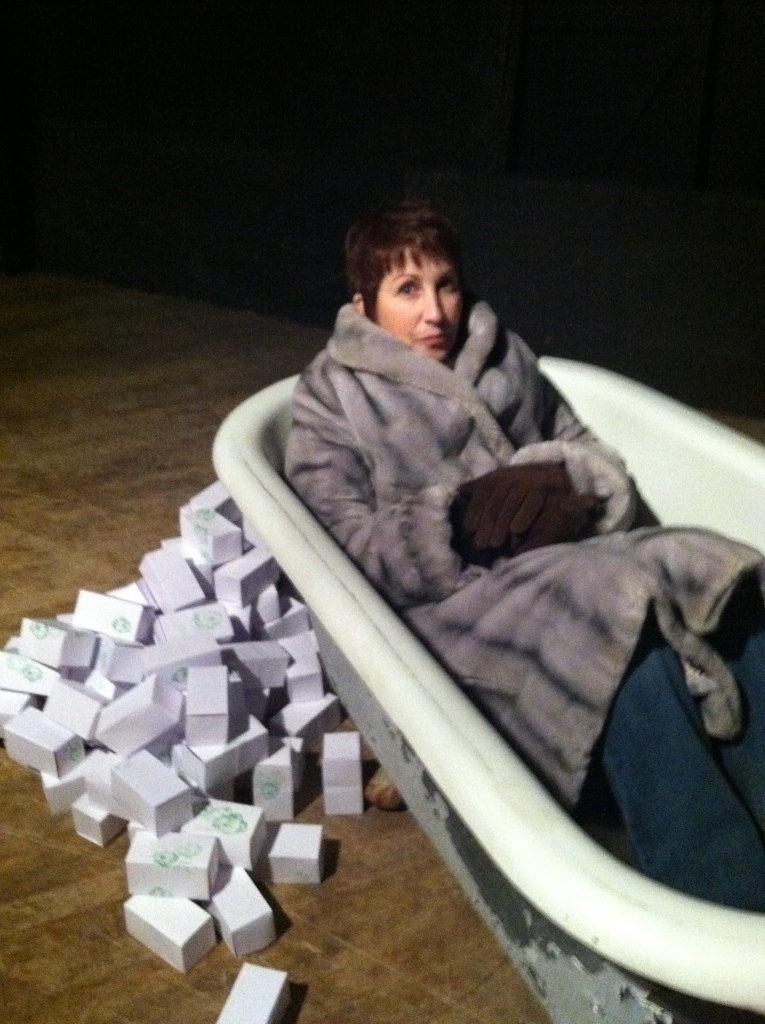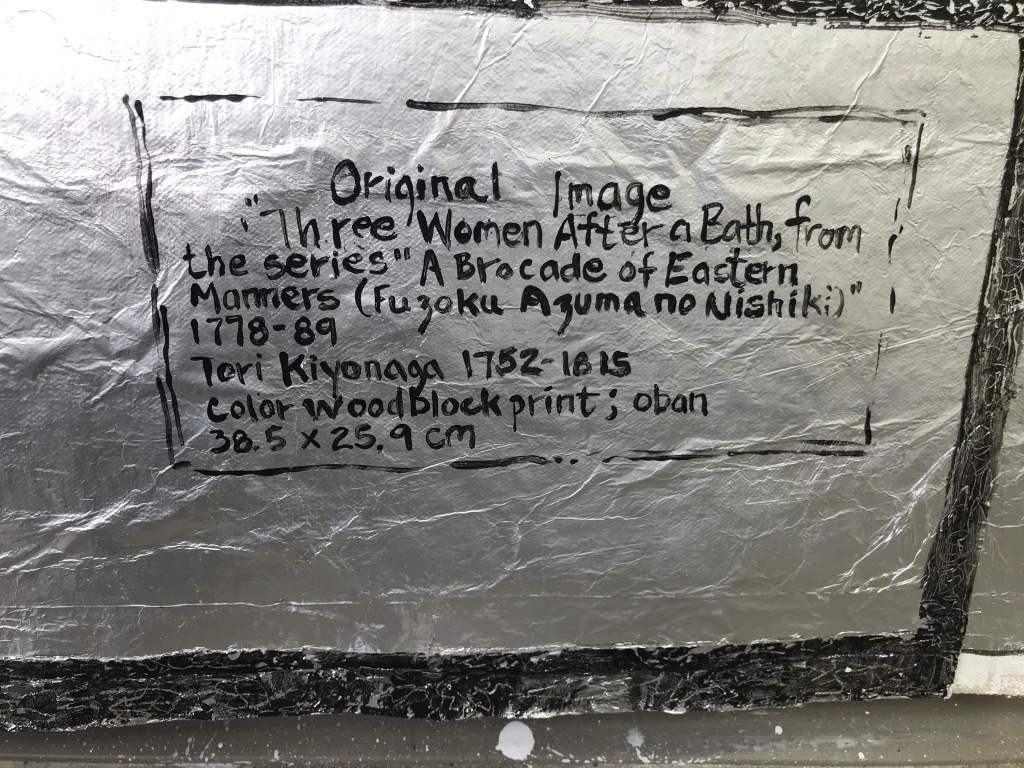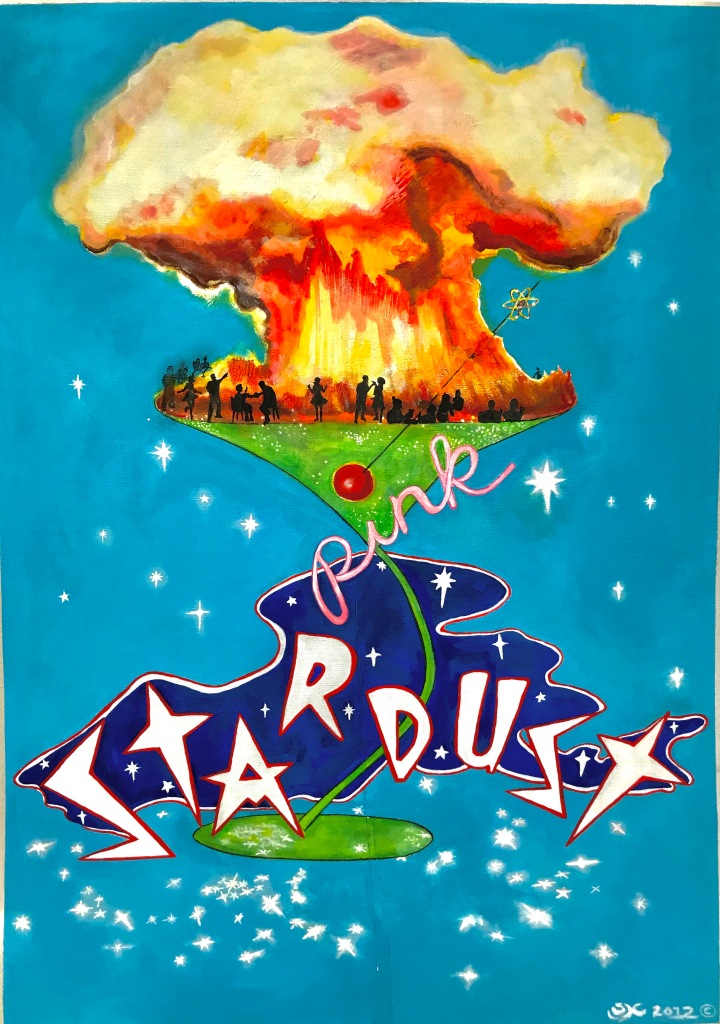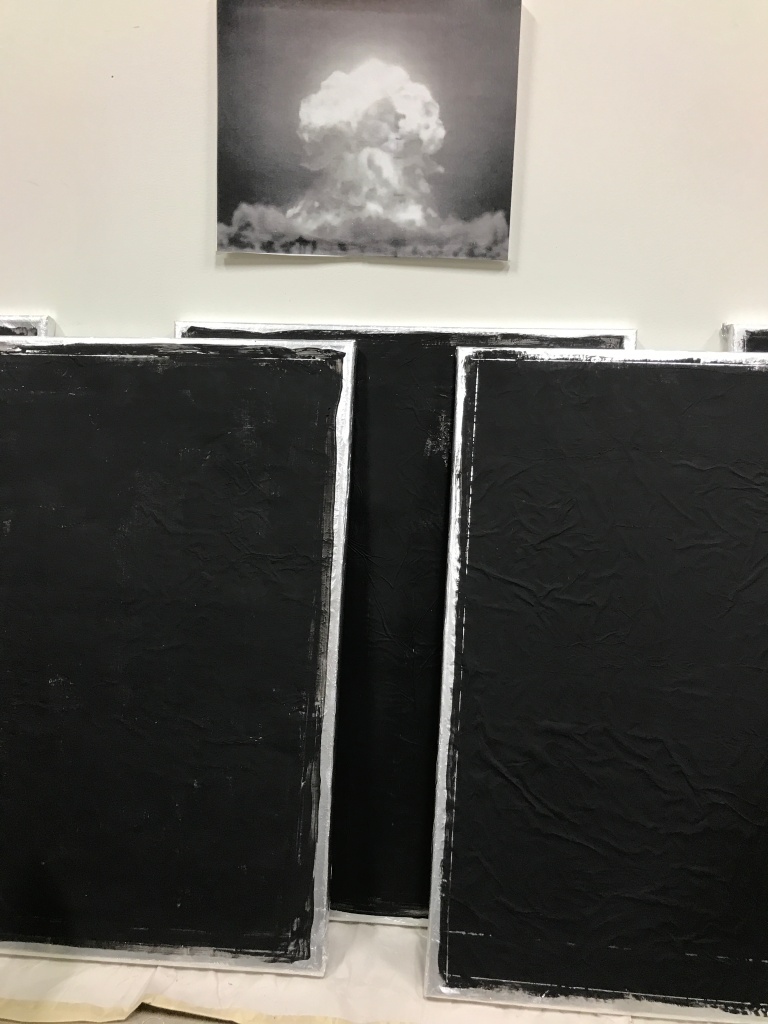Well ba-low me down, as Popeye used to say. It certainly has been a while since I posted a blog entry.
Dang, does anyone even know who Popeye is anymore? Ug,ug,ug,ug,ug…

But yes. I haven’t posted anything because I’ve been very, very busy making art for two exhibitions at the Sidetracked Gallery at Artspace in Loveland, CO., beginning back in early October of 2023. One opened in Dec. the next immediately following in January.

I also conceived and coordinated a large exhibition (and 3 events) for Artworks Center for Contemporary Art, (where I have my studio), also in Loveland, CO., that the board of directors asked me to have ready for a March 1 opening.

And I have been continuing, as always, to work on the pinkStardust installation.
But, since I am wanting to finish blogging about the making of The pinkStardust Blues music video, I am going to create two separate blog postings about the exhibitions at the Sidetracked Gallery and create another posting about the exhibition and events at ACCA, and publish both at a later date.
So please watch for postings on: The Road to Guadalupe with my mini installation Moonlight in the Age of Aquarius, The Every Day, and The Artworks Artist Invitational and events.
In the meantime, where was I? Oh yes. Back in January I posted the following: “Next posting will include more discussion about RatWorks Productions, the company who’s filming of The pinkSardust Blues music video and I am proud to say is their inaugural project. I will also include some images of some toss cards that I made in 2012, comparing them to what I created and used in 2023/24, and some more stills of the making of…”
First of all I got the video production company’s name wrong. It is Ratworks Studios out of Fort Collins Colorado. Here is their logo (below). As they are such a new company they don’t have a social media presence – yet. They are busy though, and soon will have a large enough portfolio to be out there spreading the news about their talents and capabilities. And, as I mentioned back in January, I am privileged to have The pinkStardust Blues music video be their first project.

Ratworks Studios – Joey Arebelos and TJ Lesmeister. Watch for them, because they are going to be important players in the creative business of film making very soon.
Working with Joey and TJ was really special. Collaboration is the term I would use to describe the experience. Yes, I had a concept and a vision for the music video when we began but they talked with me about ways to expand that vision and the resulting video is fantastic. I couldn’t be happier. I think it accomplishes exactly what I wanted it to – a 3 minute over view of the pinkStardust project / installation. And that is a challenge as the project can entail a very complex discussion.

Though not part of Ratworks Studios Production Company, Caryn Sanchez also worked on our video. A documentary film maker in her own right, Caryn was on our team as our Director of Photography and her input, insights and experience were invaluable.
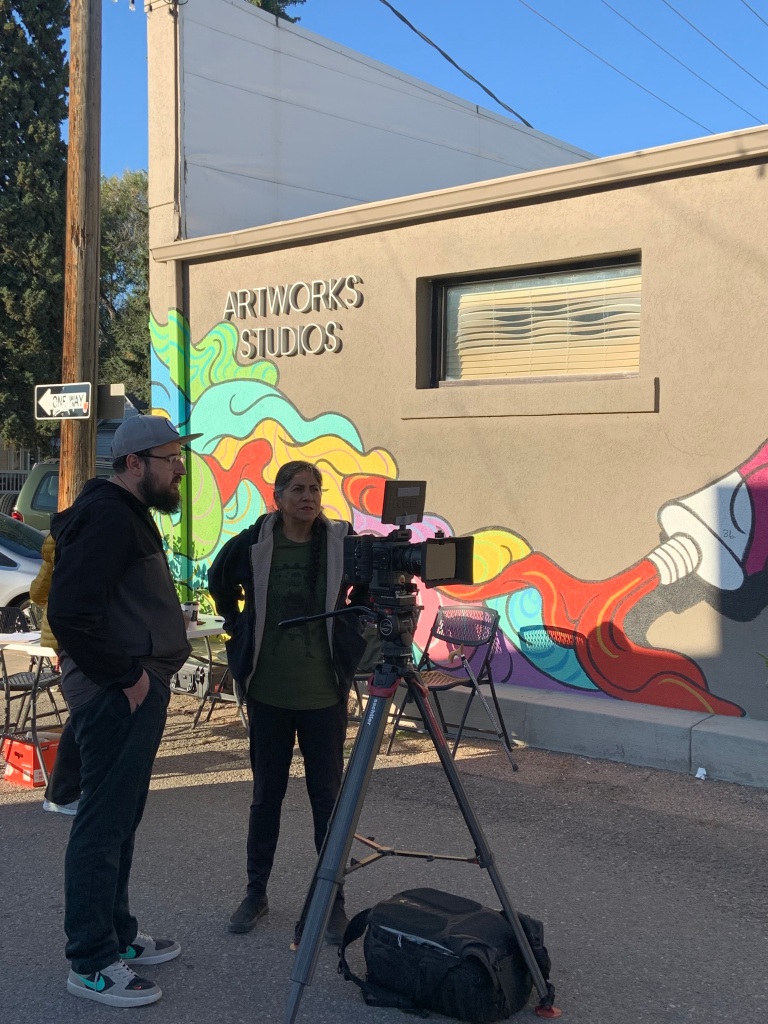
Caryn actually helped me with another aspect of making the video when she was discussing how one pitches an idea for a film. “Can you get it down to one or two sentences?” she asked me. After much discussion before any filming even started (or recording of the music for that matter) this is what we came up with. “Is it me or was this nuts!?”, referring to our atomic testing times, which is the theme and focus of the pinkStardust installation.
I have only shown the finished music video to family and some friends – mostly those who have been taking this journey with me for a long time (remember, I started working on pinkStardust in earnest back in 2012). I will post the link to the music video once my exhibition proposal has hit the desk of my intended – not a romantic intended. I mean the curator I hope to collaborate with on this project. I’m visualizing packing up a UHAUL with the work, unpacking it at the museum’s dock (or whatever way they take in exhibition work) and bringing pinkStardust to life in their gallery.
I also have some ideas for collaboration highlighting their collections, and events that we could present during the run of the exhibition. But we’ll see.
Well, this turned into a longer posting than I intended. And I was going to show you those toss cards and more stills from when we made the video. So I guess I’ll go ahead and publish this blog entry and go right into making the next one. It’s helping, as I’m working intently on the exhibition proposal for pinkStardust right now and creating the blog postings are clarifying some things for me.
Oh. By the way. Here is the wonderful logo that Joey A. created for me based on the 2012 poster image I made for pinkStardust. You know, the one I talked about in an earlier posting, that Andy helped me finish (one of my first experiences of what it’s like to work with a muse). Ain’t it great? Thanks Joey!
I’m so grateful.
Thanks. And cheers!



